The Parasitological Museum of Meguro
It’s not the best place to take a date, nor would you want to visit after eating a large meal, but the Parasitological Museum in Meguro makes a wonderful excursion for when you… I mean, it’s fun if you’re in the mood for… Or, it’s interesting for those who… You know what? I’m drawing a blank. I can’t think of a single non-creepy reason to visit the Parasaitological Museum. Unless you’re a professional parasitologist. (Even then, the very fact that you’re a parasitologist is kind of creepy.)
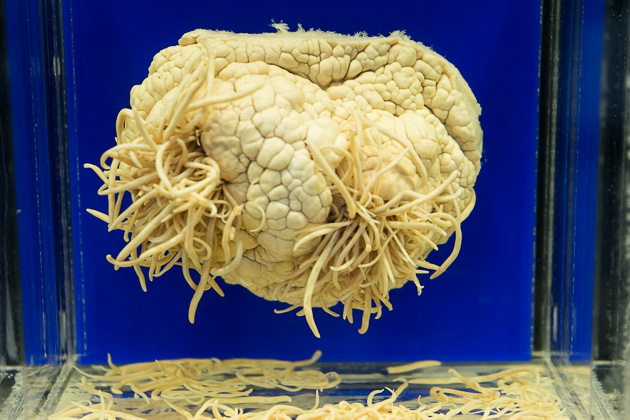
We had spent the morning viewing cherry blossoms along the Meguro River. So lovely! And then we had eaten a large meal of udon noodles. Mmm, those were good! Minutes later, I’m in front of a formaldehyde tank, looking at a tapeworm that measures 24 feet in length. And now, the questions start: what exactly are we doing here? Why are there so many other people? Is that thing an engorged tick? What’s that tickling in my stomach? Oh god, can worms really do that to a human brain? And can I be entirely certain that all of those udon noodles were actually udon noodles?
This is one of the most horrifying museums I’ve ever visited. Horrifying and fascinating. Privately founded in 1954 by a doctor, Meguro’s is the only Parasitological Museum in the world, with over 300 disgusting little (and not-so-little) specimens on display. None still alive, thankfully. The focus is on human parasites, with information about their life-cycle, reproduction methods and habitats. Very few of the exhibits have English translations, but I wasn’t too disappointed by this. Seeing the worms which might be crawling around inside our bodies is bad enough, without having to know exactly what they’re doing to us.
-We also visited this strange museum: The Phallological Museum In Iceland




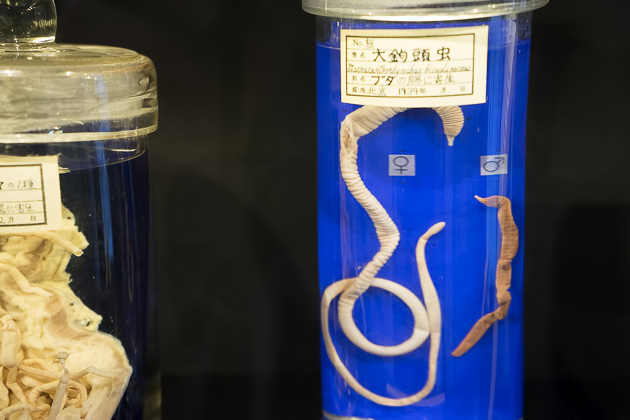

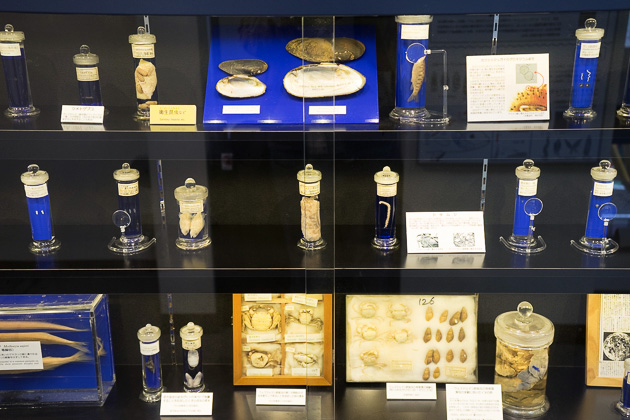

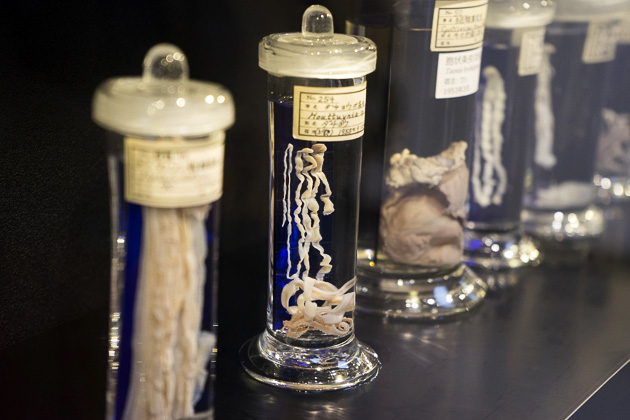


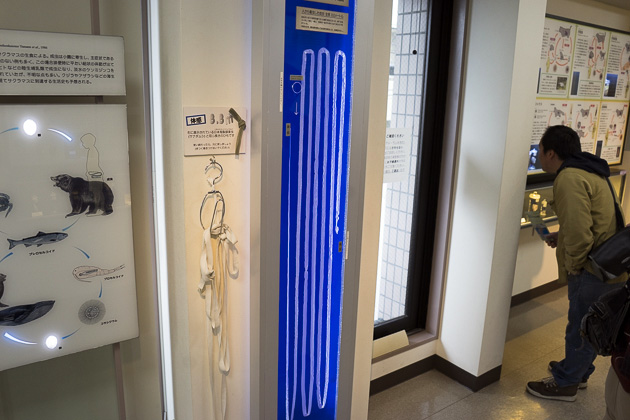


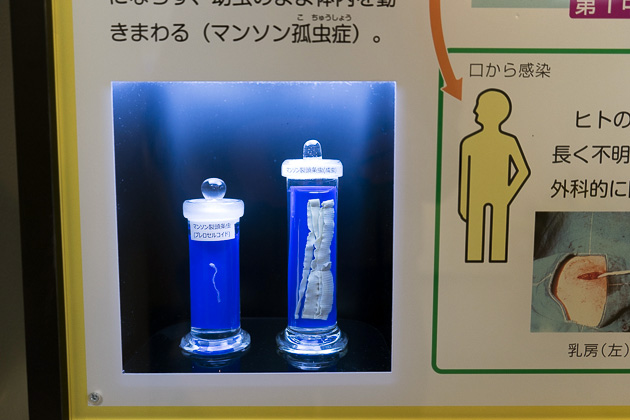
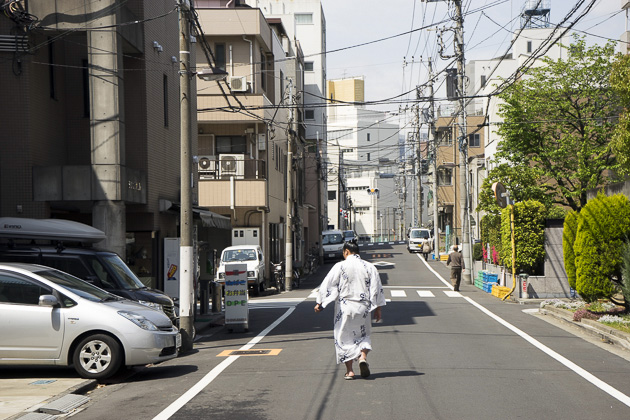

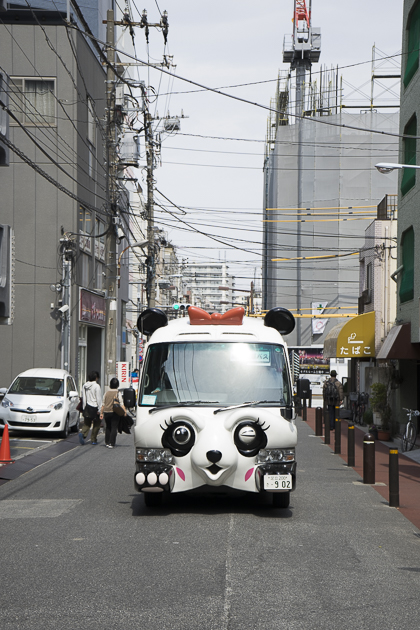
Pingback: The Art of Darkness » Blog Archive » Attack of the Killer Link Dump
Pingback: 11 Weird Museums From Around The World | Random Good Stuff
I visited this beautiful place in Summer 2012 and afterwards we went for lunch in a nearby noodle restaurant. It is a must for a parasitologist to go there once in a lifetime. I deposited the holotype of Cloacitrema phoenicopteri found on the cloacal rim of a flamingo.
Pingback: The Art of Darkness » Blog Archive » I am Joe’s Link Dump
Pingback: Lady Hats at the Mansion - Savannah Travel Blog And Guide - For 91 Days
Pingback: The Dolls of ARTlandya in Icod - For 91 Days - Tenerife Travel Blog
Pingback: Die Puppen von ARTlandya in Icod - Teneriffa - Langsam Unterwegs - Teneriffa Reiseblog